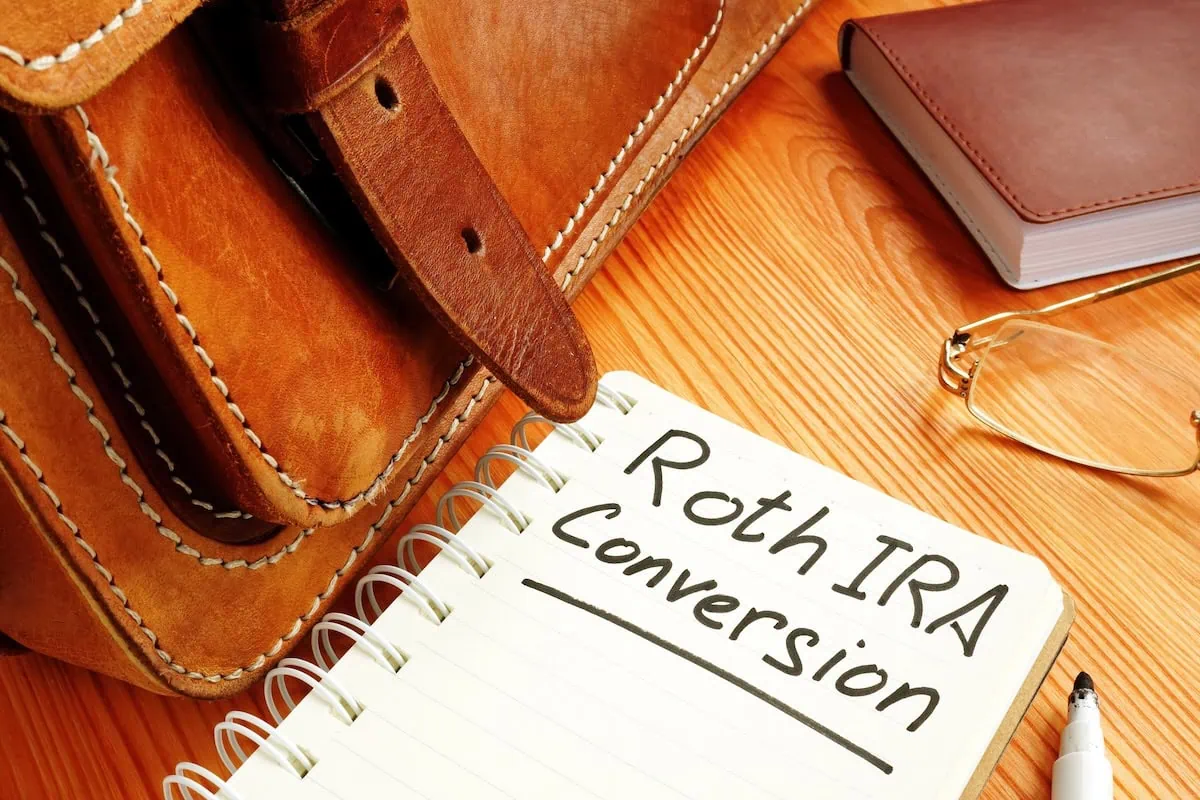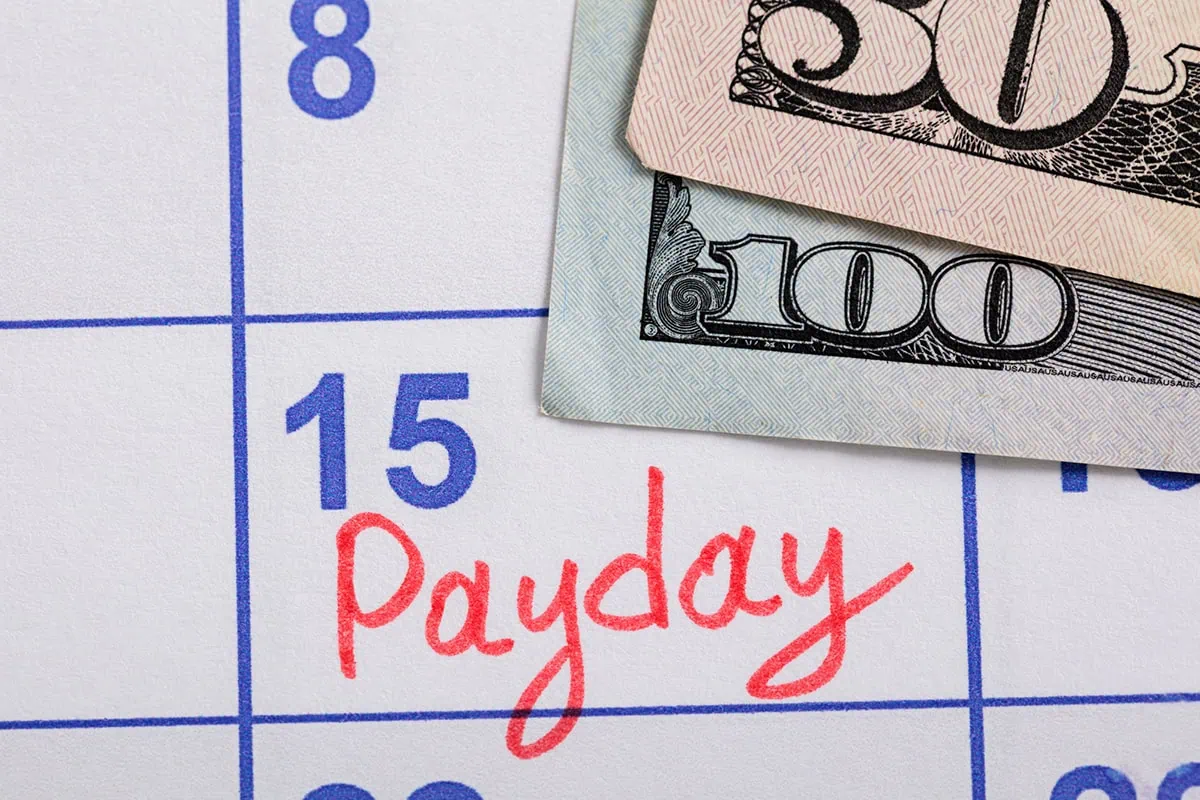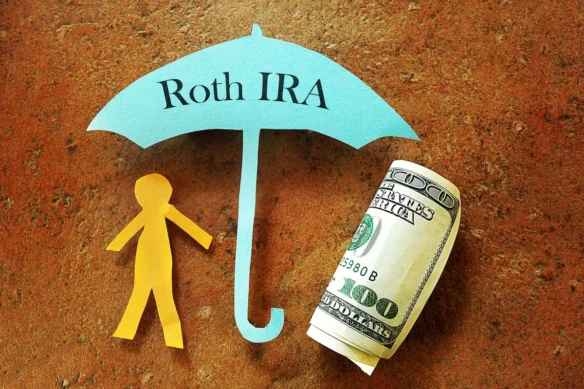A Roth conversion—when you take money from a tax-deferred account, like a traditional 401(k) or IRA, and put it into a Roth account, typically a Roth IRA—is a financial strategy with the potential to yield significant financial benefits.
Potential is the key word there. Because while a Roth conversion perfectly fits with some people’s needs for tax-free growth and future withdrawal flexibility, some people could actually do more harm than good by transferring their money.
Put differently: We can’t universally say “Roth conversions are good” or “Roth conversions are bad.” They depend on your unique financial situation. So, how can you know whether a Roth conversion is good for you?
Today, rather than a list of pros and cons, I’m instead going to explain the various variables you should consider when determining whether a Roth conversion will benefit you. Your income, age, even philanthropic tendencies, and much more, will have an impact on your decision about whether you should convert your funds, and if so, how much.
Table of Contents
Important Roth Conversion Considerations

In short, a Roth conversion is when you withdraw funds from a tax-deferred account and put them into a tax-exempt account, triggering an immediate tax hit in exchange for tax savings on withdrawals in retirement (as well as a few other benefits).
If you frequent retirement savings message boards, you’ve likely heard both the merits and detriments of Roth conversions (or, for higher earners, backdoor Roth conversions). For the right people, a Roth conversion is a powerful strategy for future-proofing your retirement savings. But for others, it can create an unnecessary financial burden—and spawn a few other issues, too.
The following considerations can help you get an idea as to whether a Roth conversion is a smart move for you at this point in your life.
1. Income Tax Rates (Now and Later)

One of the most important considerations when deciding if a Roth conversion makes sense for you is how your current tax bracket compares to what you believe it will be later in life (specifically, once you retire).
When a person executes a Roth conversion, they must pay income tax on the funds they moved. That tax will be due alongside any other taxes owed for the tax year in which they made the conversion, and in fact, you might have to pay some of the taxes during the tax year, in the form of quarterly estimated payments. The tradeoff? Those converted contributions will continue to grow-tax free, and after five years, distributions on those contributions will become tax-free, too. (However, taxes and penalties for withdrawing earnings on those contributions before age 59½ still apply.)
If you believe your income tax rate in retirement will be the same or higher in the year you’re considering doing a conversion, a Roth IRA conversion might be a smart tax move. However, if you think your tax rate will be lower in retirement, a conversion might be less beneficial from a tax standpoint.
Just remember: The more you convert in a single year, the more risk that you’ll push yourself into a higher marginal tax bracket, which could cause you to pay more in taxes. To prevent this from happening, some people will spread their overall planned conversion amount across multiple years, limiting the amount they convert in any one year to remain within their tax bracket.
2. Whether You Have Sufficient Funds to Pay for the Conversion

As I just mentioned, you must pay taxes on a Roth conversion for the tax year in which you complete the conversion.
Assuming you have ample liquid funds, such as cash or cash equivalents, this might be a small price to pay for future tax-free growth. However, if you don’t have enough money to pay the tax, or could only afford the tax by selling assets (which could generate another tax hit), this likely isn’t the best time to do a Roth conversion.
Also worth noting: The custodian of your traditional IRA withholds 10% federal tax from the converted funds. Ideally, you should be able to pay for a Roth conversion with non-IRA funds and request nothing be withheld on the conversion.
Related: What’s the Best Tax Bracket for a Roth IRA Conversion?
3. Current Retirement Savings Tax Treatment

Another consideration is the percentage of your retirement savings that are wrapped up in different types of accounts.
Let’s say all of your retirement savings are in a single traditional 401(k). That means all of your savings sit in tax-deferred accounts. Now let’s say all of your retirement savings are split 50/50 between a traditional 401(k) and a traditional IRA. Even though your savings are in different accounts, all of your savings are still in tax-deferred accounts. However, let’s say your retirement savings are split 50/50 between a traditional 401(k) and a Roth IRA. Then half of your money is in tax-deferred accounts, while the other half is in tax-exempt accounts.
Why does this matter? The difference in tax treatment on withdrawals. Once you reach retirement, if you have money in both types of accounts, you can better manage your tax brackets and more optimally customize your tax planning as a retiree.
In other words: If all of your money is currently wrapped up in tax-deferred retirement accounts, a Roth conversion (which would put some of your money in tax-exempt retirement accounts) would provide you with more tax planning flexibility in retirement. The more money you have in tax-exempt retirement accounts, the less you’ll want/need to perform a Roth conversion.
Related: What Are the Average Retirement Savings By Age?
Do you want to get serious about saving and planning for retirement? Sign up for Retire With Riley, Young and the Invested’s free retirement planning newsletter.
4. Current Age

There is no maximum age for when you can execute a Roth IRA conversion, but some ages are more ideal than others.
For instance, if all else is equal, the younger you are, the more appealing a Roth conversion is, for several reasons. For one, you’ll have more time to benefit from tax-free growth than someone older who is counting down the days until retirement. Also, when you’re younger, you likely will have less money in your retirement account, which means your conversion taxes won’t be as hefty as they will be later in life. (Though they could still be substantial compared to how much you earn at work and how much you have set aside in savings.)
Of course, the younger you are, the more realistic it also might be to simply start contributing to a Roth IRA, as long as you don’t earn above the contribution thresholds.
Related: Social Security Timing: 7 Questions to Pinpoint Your Perfect Starting Age
5. When You Anticipate Needing to Start Making Withdrawals

If you have enough retirement funds saved up in traditional accounts that you probably wouldn’t need to touch any funds from Roth accounts until your mid-70s or later, a Roth conversion could be a good idea.
Unlike traditional, tax-deferred retirement accounts, Roth IRAs don’t have required minimum distributions (RMDs). That means you can keep letting money grow in your Roth IRA for as long as you want, rather than taking distributions unnecessarily.
The more time those funds have to grow, the more money you will (potentially) have once you do need to tap into that account.
Related: Are RMDs Required If You’re Still Working?
6. Whether You Want to Maximize Your Estate for Your Heirs

Do you have enough saved for retirement that you would never need to make withdrawals from an account converted into a Roth IRA? Then you might want to focus on setting the table for your loved ones by executing a Roth IRA.
Again, because Roth accounts don’t have RMDs, you can continue to let your money grow until the day you pass. You can then pass your Roth IRA on to your heirs.
If you had not yet begun to take RMDs from the account, your heirs generally won’t be required to take RMDs, either. However, they will have to liquidate the account by the end of the 10th year following the year of your death. The good news? As long as they follow IRS distributions, they should be able to withdraw that money tax-free.
Related: How to Pass an IRA to Heirs [Without Leaving a Tax Mess]
7. Account Value

Bear markets are a popular time to make Roth conversions.
Why? Well, while we can’t guarantee that the next bear market won’t last forever, it’s a simple fact that stocks have bounced back from every bear market ever. So, if a bear market chops your account value to a number that you believe is much lower than you expect it to recover to in the future, a Roth conversion might make sense. You’ll pay less tax now than you would at a higher account value, and your money will still enjoy the tax-free growth it would have experienced in the traditional account.
In fact, regardless of current market conditions, if you own stocks or assets you suspect will rise in value substantially, you might want to pay the piper now rather than get stuck with an even higher bill if you convert in the future.
Just remember: The market is fickle. Most experts dissuade people from trying to “time the market” with their purchases, as no one can really know how long a bear market will last or how much lower it will go from current prices. But as long as you’re generally OK with the idea that you might not convert at your absolute lowest account value, as long as you achieve some tax savings, a Roth conversion in a bear market may very well be a good idea.
Related: 10 Best ETFs to Beat Back a Bear Market
8. Whether You’ll Need the Money in Less Than 5 Years

Roth conversions have a “five-year rule”: After you execute a conversion, you can’t withdraw any converted funds for five years without triggering income taxes and a 10% IRS penalty on any withdrawn funds.
In short: If you think that, within five years, you might need any of the money you’re considering converting, it’s probably unwise to convert that money. If you do withdraw money before that holding period, you’d end up paying the very taxes you were hoping to minimize.
But if you’re confident you won’t need any of the money you’re planning on converting within the next five years, the five-year rule shouldn’t be an issue for you.
Related: When Should You Take Social Security?
9. Plans to Donate to Charity

Do you donate a substantial amount to charity every year and plan to continue doing so during retirement?
Traditional IRA owners age 70½ or older may be eligible to make qualified charitable distributions (QCDs). Through QCDs, qualifying older adults can transfer money tax-free up to the annual limit each year. For 2025, the limit is $108,000. (If you’re married, each individual can contribute up to their individual limit.) These transfers also count toward one’s required minimum distributions for the year.
If you plan to take advantage of QCDs to avoid taxes or RMDs, you don’t need to do a Roth conversion for the same purposes.
Related: RMDs Too High? 6 Ways to Reduce Them at Age 73
10. Whether a Conversion Means Higher Medicare Premiums

Following a Roth conversion, you must report income from the conversion on your federal tax return for that year. And if you’re enrolled in Medicare, that income boost might result in higher premiums.
Why? Medicare users with a modified gross adjusted income (MAGIs) above a certain threshold pay a monthly surcharge for Part B and Part D in addition to their regular monthly premiums. If you’re currently on Medicare or will be soon, crunch the numbers to see whether a conversion would increase your premiums. Like with possibly putting yourself into a higher tax bracket, you might want to spread out a planned conversion across several years if it would prevent a hike in what you pay for Medicare.
If you’re not on Medicare and far away from needing it, this isn’t a concern.
Want to talk more about your financial goals or concerns? Our services include comprehensive financial planning, investment management, estate planning, taxes, and more! Schedule a call with Riley to discuss what you need, and what we can do for you.
Related: 13 Best Long-Term Stocks to Buy and Hold Forever

As even novice investors probably know, funds—whether they’re mutual funds or exchange-traded funds (ETFs)—are the simplest and easiest ways to invest in the stock market. But the best long-term stocks also offer many investors a way to stay “invested” intellectually—by following companies they believe in. They also provide investors with the potential for outperformance.
So if you’re looking for a starting point for your own portfolio, look no further. Check out our list of the best long-term stocks for buy-and-hold investors.
Related: 10 Best Monthly Dividend Stocks for Frequent, Regular Income

The vast majority of American dividend stocks pay regular, reliable payouts—and they do so at a more frequent clip (quarterly) than dividend stocks in most other countries (typically every six months or year).
Still, if you’ve ever thought to yourself, “it’d sure be nice to collect these dividends more often,” you don’t have to look far. While they’re not terribly common, American exchanges boast dozens of monthly dividend stocks.
Please Don’t Forget to Like, Follow and Comment

Did you find this article helpful? We’d love to hear your thoughts! Leave a comment with the box on the left-hand side of the screen and share your thoughts.
Also, do you want to stay up-to-date on our latest content?
1. Follow us by clicking the [+ Follow] button above,
2. Subscribe to Retire With Riley, our free weekly retirement planning newsletter, and
3. Give the article a Thumbs Up on the top-left side of the screen.
4. And lastly, if you think this information would benefit your friends and family, don’t hesitate to share it with them!






